

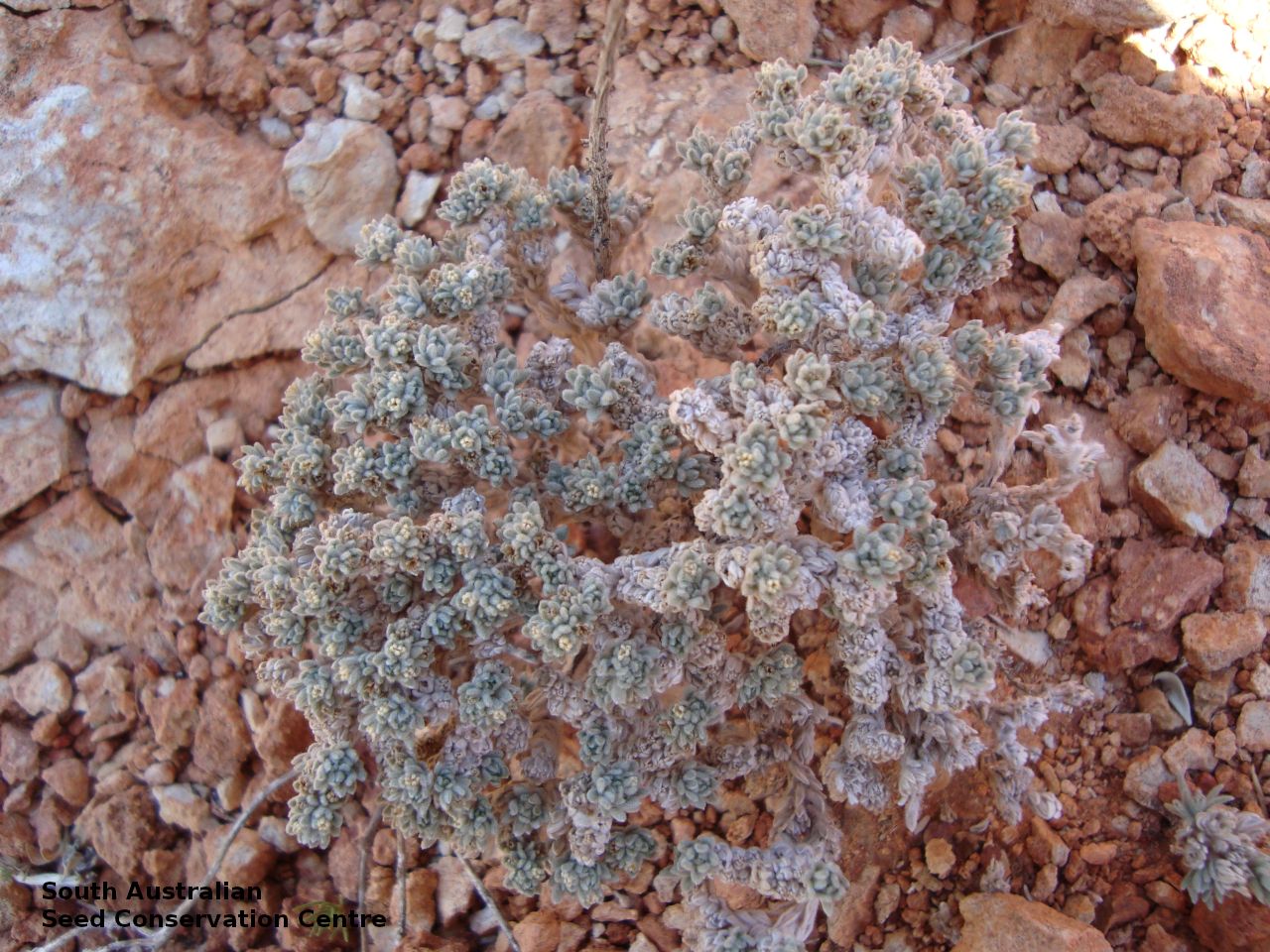
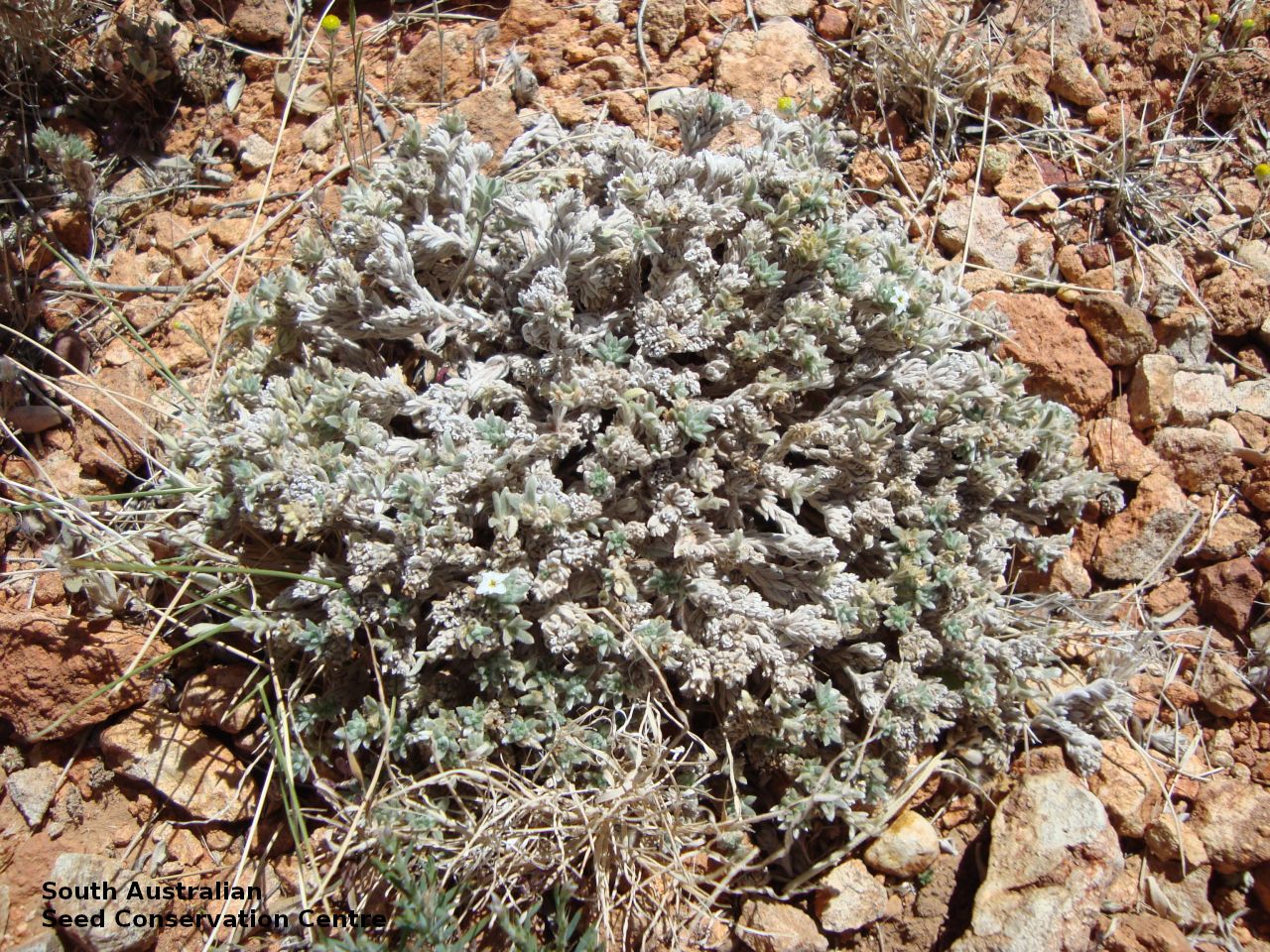
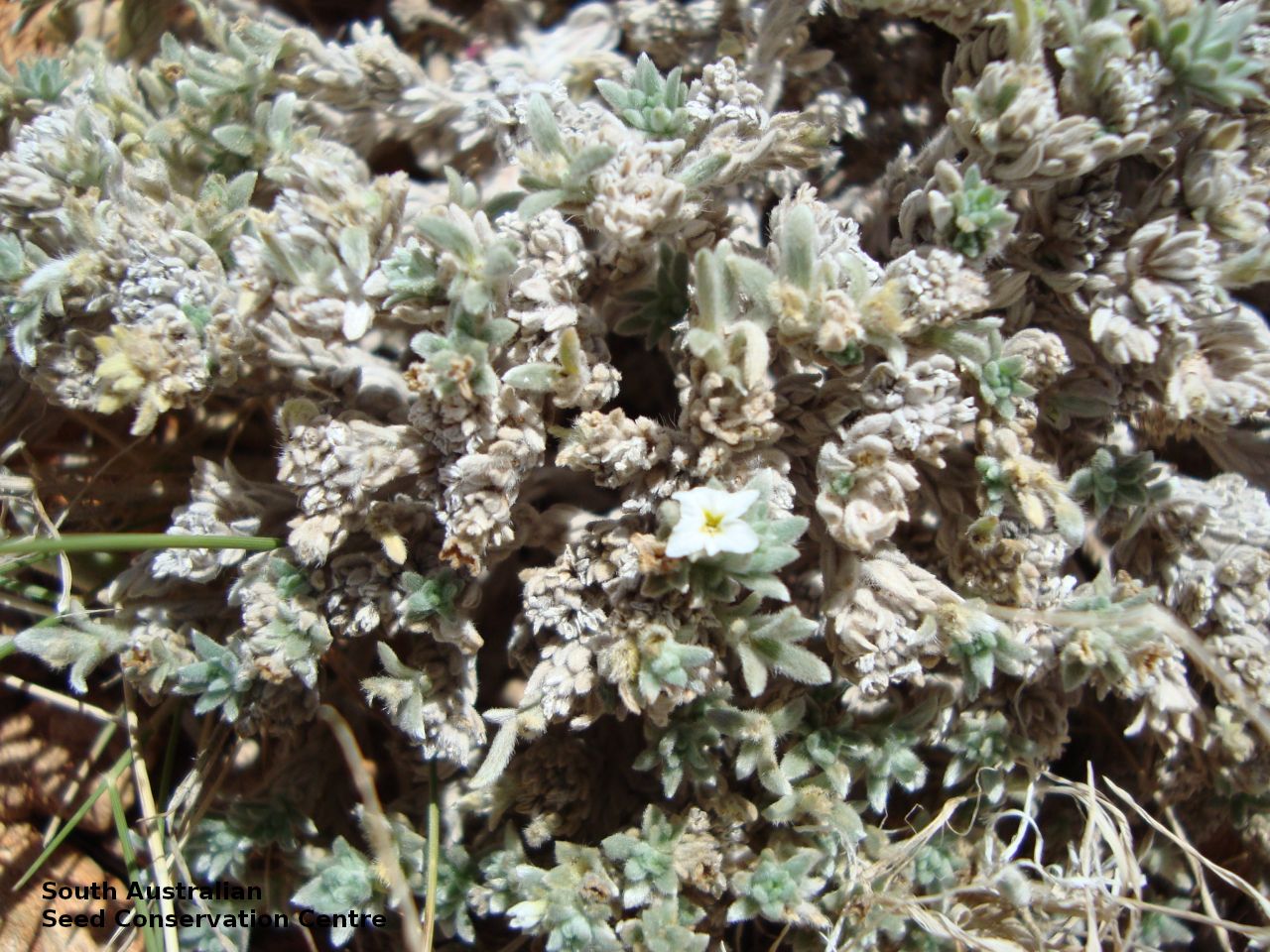

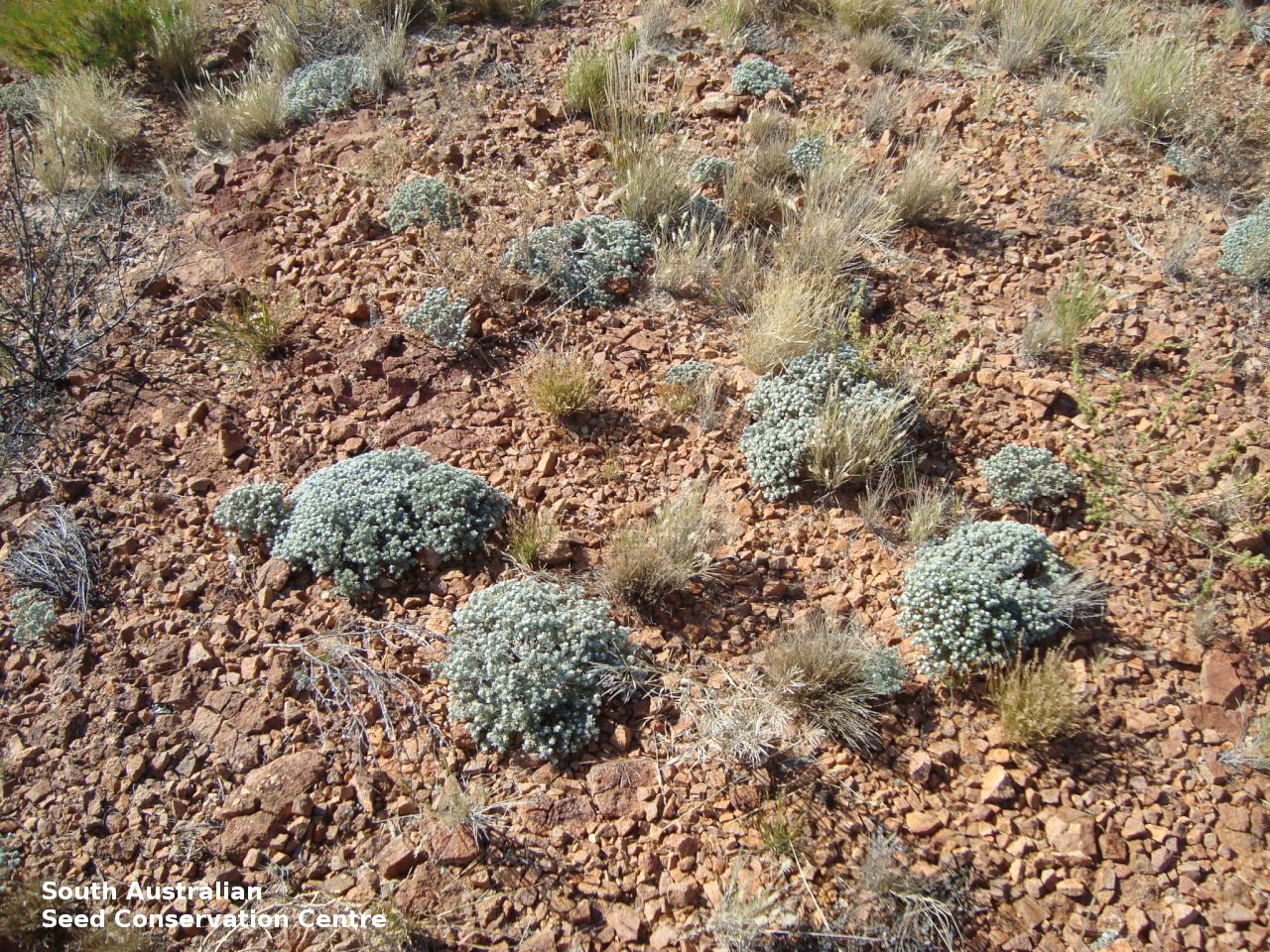

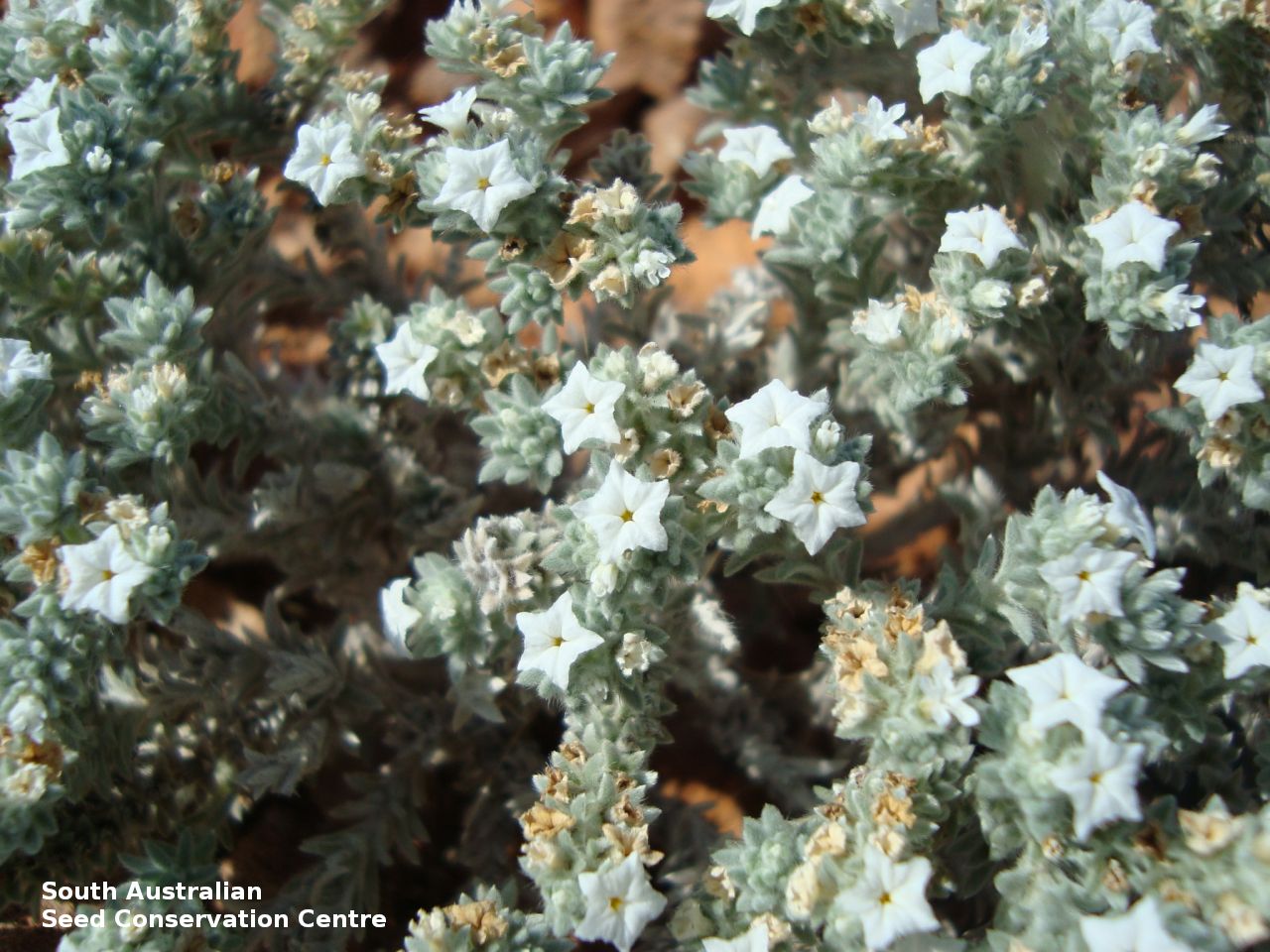
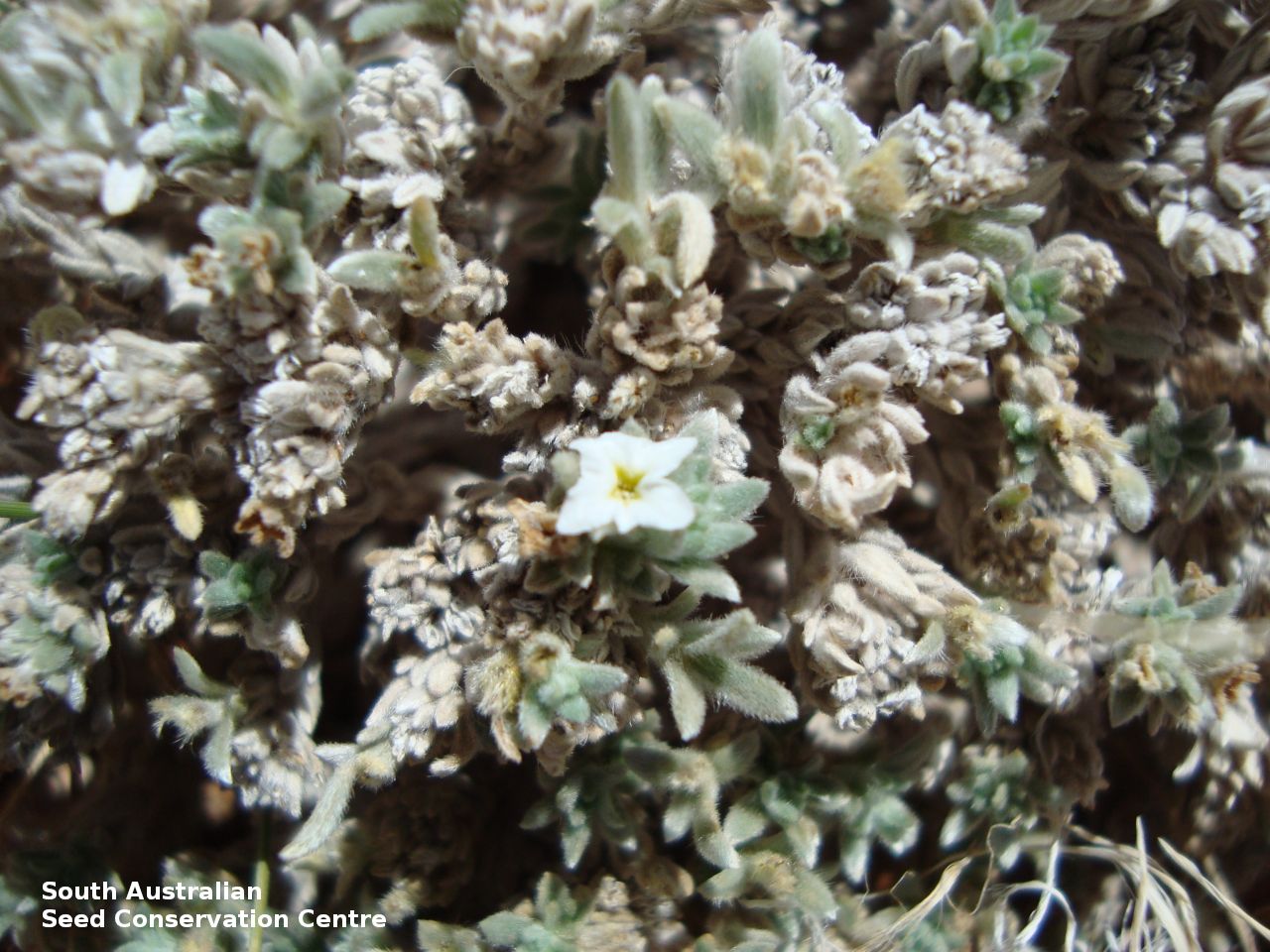

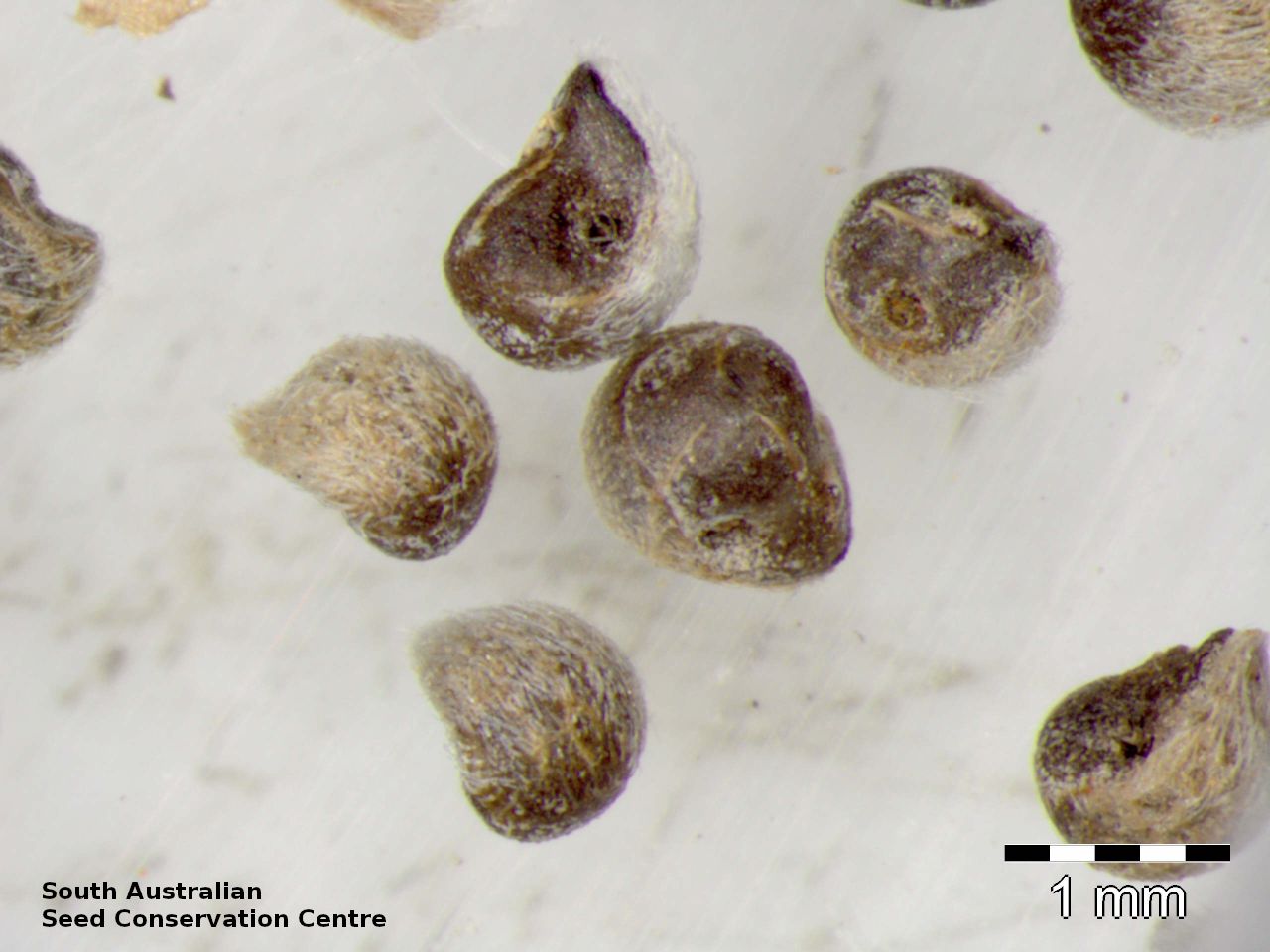
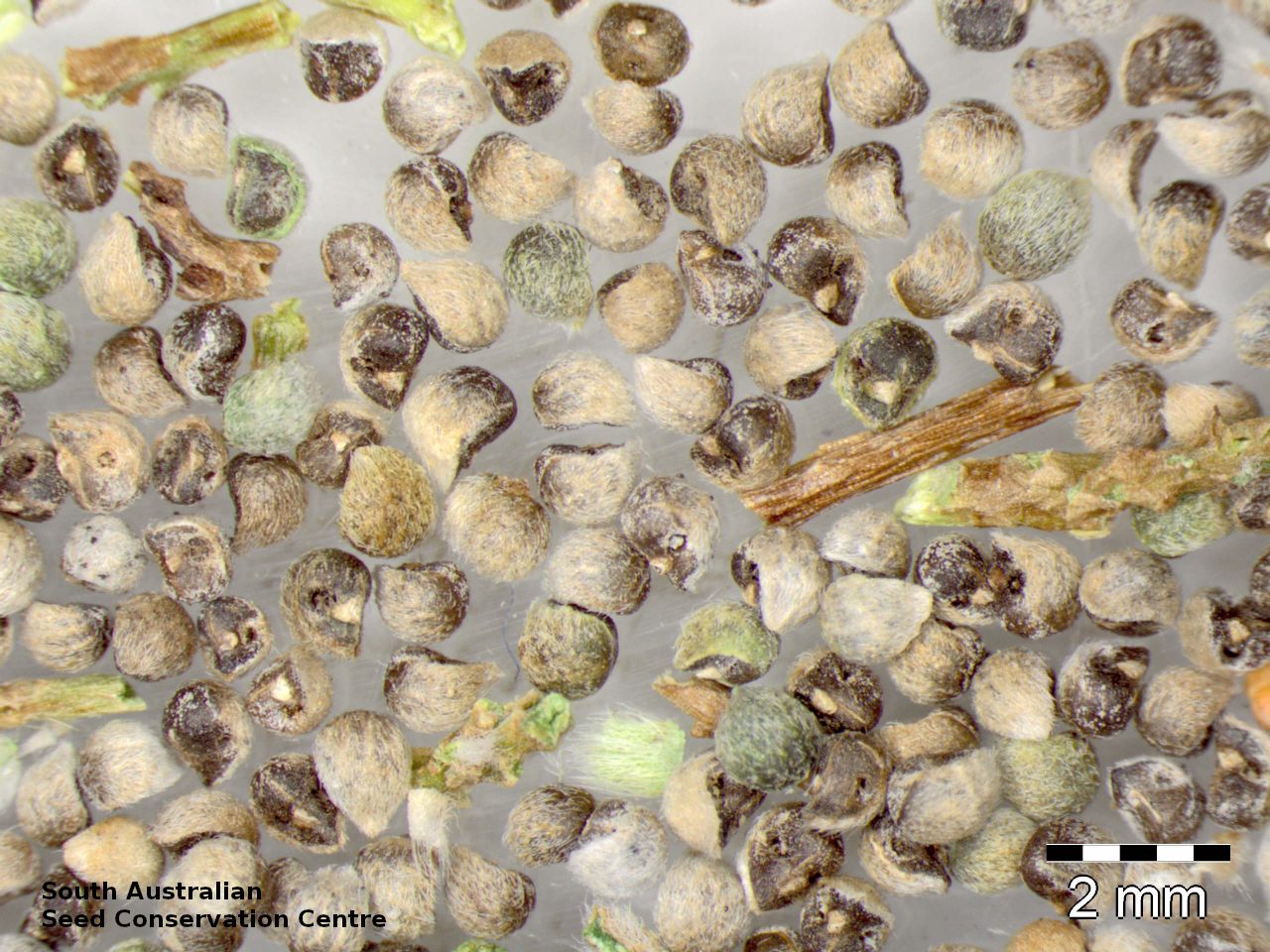

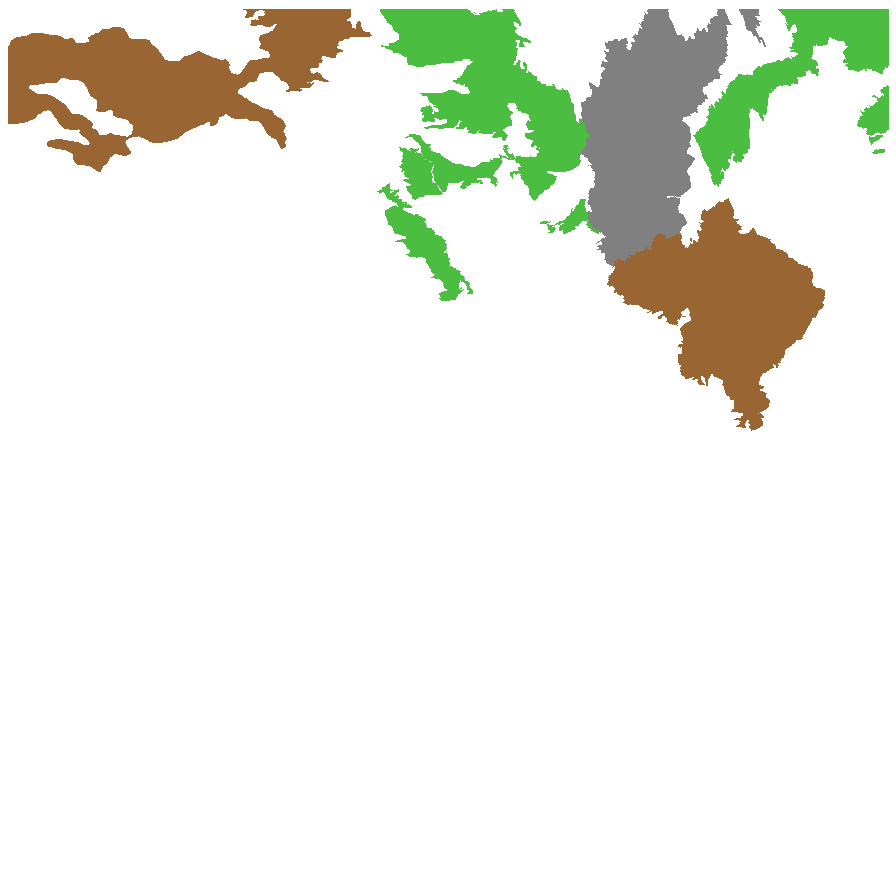
Etymology
Heliotropium from the Greek 'helios' meaning sun and 'tropos' meaning turn, probably alluding to an early belief that the flowers turned to face the sun. Filaginoides means resembling the genus Filago (from the Latin 'filum' meaning threadlike, in reference to its cotton-like flower heads).
Distribution and status
Found scattered across the upper northern part of South Australia, growing on stony ground. Also found in Northern Territory and Queensland. Native. Uncommon in South Australia. Common in the other States.
Herbarium regions: North Western, Lake Eyre, Eastern
NRM regions: Alinytjara Wilurara, South Australian Arid Lands
AVH map: SA distribution map (external link)
Plant description
Perennial herb to 20 cm tall, usually cushion-shaped with dense white hairs on the stems, leaves and calyx. Leaves narrowly lanceolate to narrowly elliptic, to 9 mm long and 1.5 mm wide; subsessile, the apex obtuse, the margin revolute. Inflorescence a much reduced cyme, usually consisting of 1 to few, white yellow-throated flowers. Fruits are brown capsules retained within the calyx at maturity. Seeds are brown sectoroid seed to 1.5 mm long and 1 mm wide, covered in long white hairs. Seed embryo type is spahulate fully developed.
Seed collection and propagation
Collect seeds between September and November. Collect mature capsule, those that are drying off, turning brown and contaiing dark, hard seeds. Can collect individual fruit cluster or break off whole heads. Place the capsules in a tray and leave to dry for one to two weeks. Then rub the fruits gently by hand to dislodge the seeds. Use a sieve to separate the unwanted material. Store the seeds with a desiccant such as dried silica beads or dry rice, in an air tight container in a cool and dry place. From one collection, the seed viability was high, at 100%.
| Location | No. of seeds (weight grams) | Number of plants | Date collected | Collection number Collection location | Date stored | % Viability | Storage temperature |
|---|---|---|---|---|---|---|---|
| MSB | 3,000 (1.48 g) | 50+ | 28-Sep-2008 | TST530 Lake Eyre | 85% |
Number of plants: This is the number of plants from which the seeds were collected.
Collection location: The Herbarium of South Australia's region name.
% Viability: Percentage of filled healthy seeds determined by a cut test or x-ray.